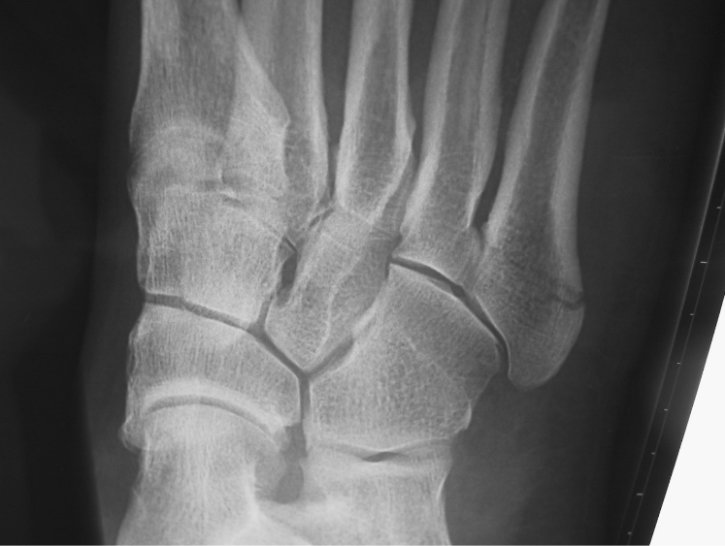Because of the location of the fracture in the fifth metatarsal bone, a Jones Fracture is a broken bone that has a higher likelihood of not healing (a “bad actor”).
Office Appointments and Telemedicine with Dr. Carreira

You can also book an office appointment or a telemedicine visit by calling Dr. Carreira’s office at 404-355-0743. Book now.
Nonoperative Treatment for Jones Fracture
In many cases, there are two options of treatment, both surgical and nonsurgical, with advantages and disadvantages of each treatment. Nonoperative treatment is not easy, requiring strict nonweightbearing and casting to help ensure success.
Surgical Treatment for Jones Fracture
Placement of a screw down the center of the bone provides additional stability and stimulates healing. As compared to nonoperative treatment, operative fixation typically speeds the process of healing and recovery, allowing active patients an earlier return to their activities in a shorter amount of time.
Dr. Carreira performed an extensive study of players at the NFL Combines which was published in Foot and Ankle International in which he reviewed the x-rays of hundreds of players with this injury. In his review, patients who underwent surgical treatment had a higher rate of healing of the fracture than those who were treated without surgery and with casting.
There are several variants of these “difficult to heal” fifth metatarsal fractures including the proximal diaphyseal fracture, that are treated in a similar fashion.

A Jones fracture noted at the base of the 5th metatarsal. Because this injury was acute and without preexisting signs of non-healing or stress injury, the option of nonoperative treatment was discussed, which consists of strict non weight bearing and casting, and which was a successful treatment in this compliant patient.
Recovery from Surgery for Jones Fracture
- You will be non weight-bearing for several days only.
- In order to stay off your foot, you will need to use crutches, a walker, a wheelchair or a scooter type device called a roll about.
- There will be a hard plaster bandage applied to the leg for the first few days after surgery, followed by a CAM boot.
- At approximately 2 weeks the sutures will be removed.
A physical therapy protocol will be initiated to help regain strength and movement.
There will be moderate swelling of the foot and ankle for approximately three months with a gradual decrease in swelling typically after the first several days.
Specific Postoperative Course following Jones Fracture
Day 1
- Foot wrapped in bulky splint
- Ice, elevate, and take pain medication
- Expect numbness in the foot for 12-24 hours
- Bloody drainage may be noted through the splint
*Do not change the splint
Days 3-5
- Dressing changed
- Placement in CAM boot
- Start partial weight bearing
Days 10-14
- Dressing changed
- Continue CAM boot
- Full weight bearing
6 Weeks
- X-ray taken to check bone healing.
- Use a boot (CAM walker) for about 2 more weeks.
- The boot can be removed at night, and for gentle movement exercises.
- Swimming is permitted.
- Wear a stiff soled (rigid soled) shoe for a minimum of three months.
- An orthotic insert is used to support the foot in the area of the fracture and is to be used long term.


